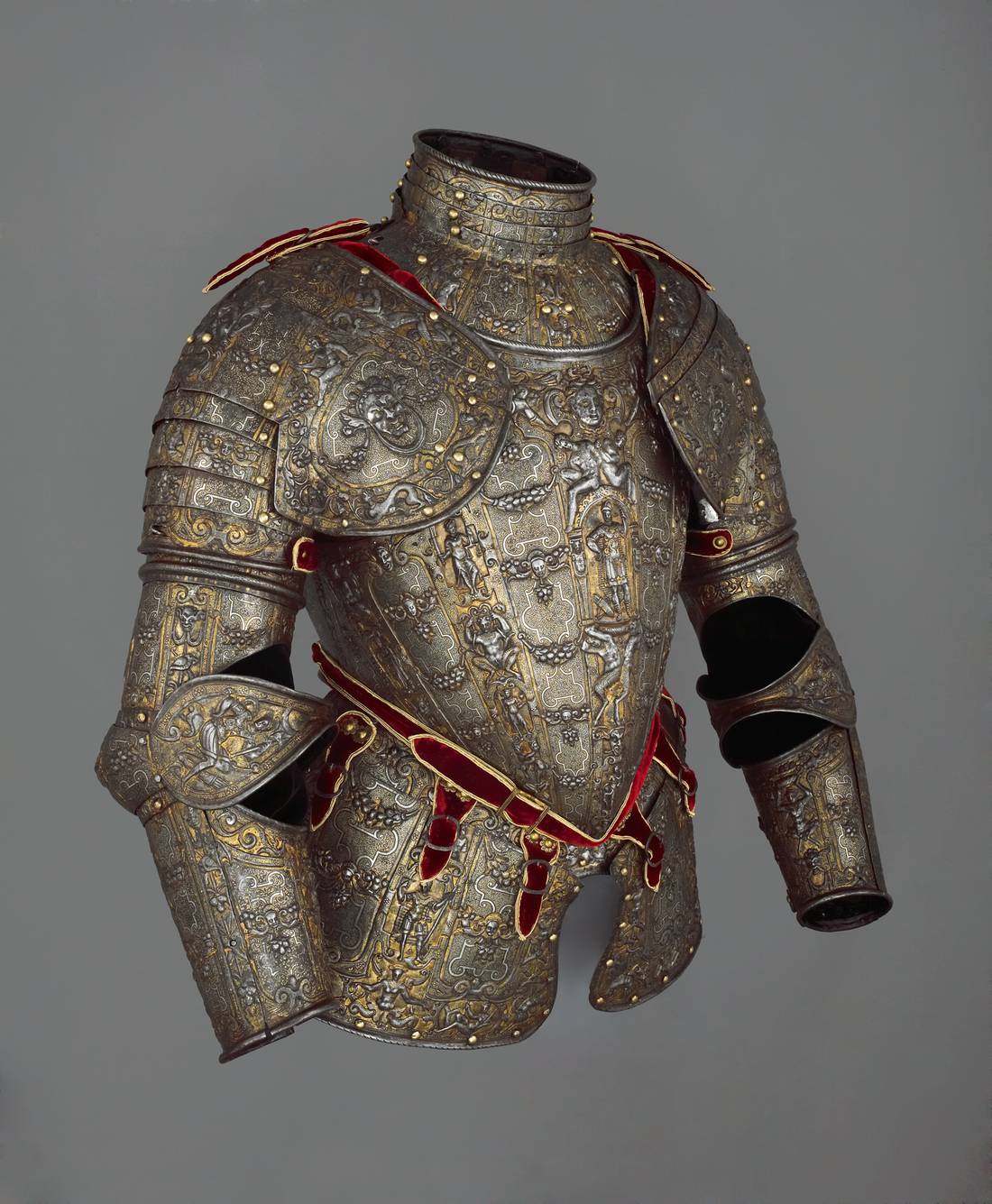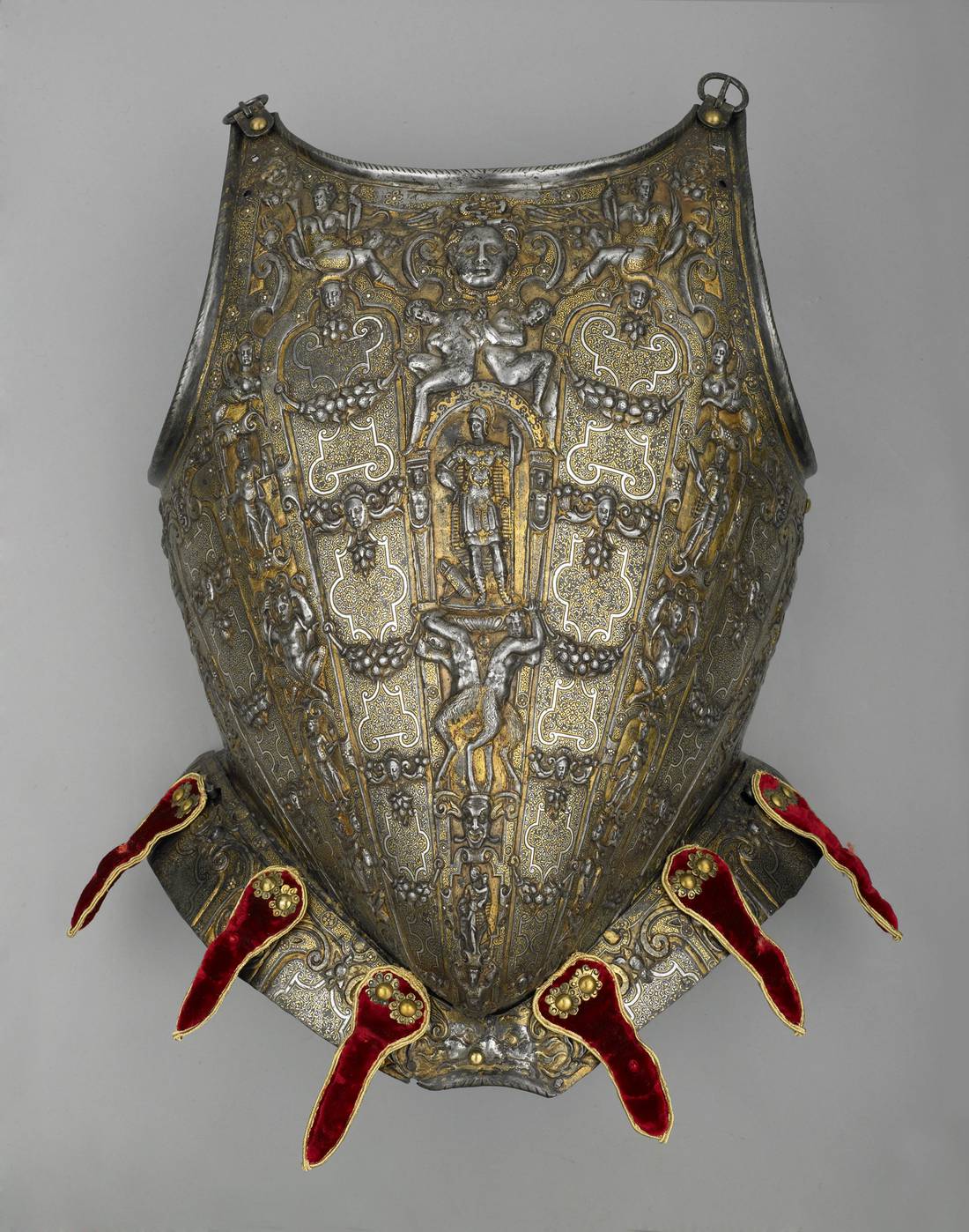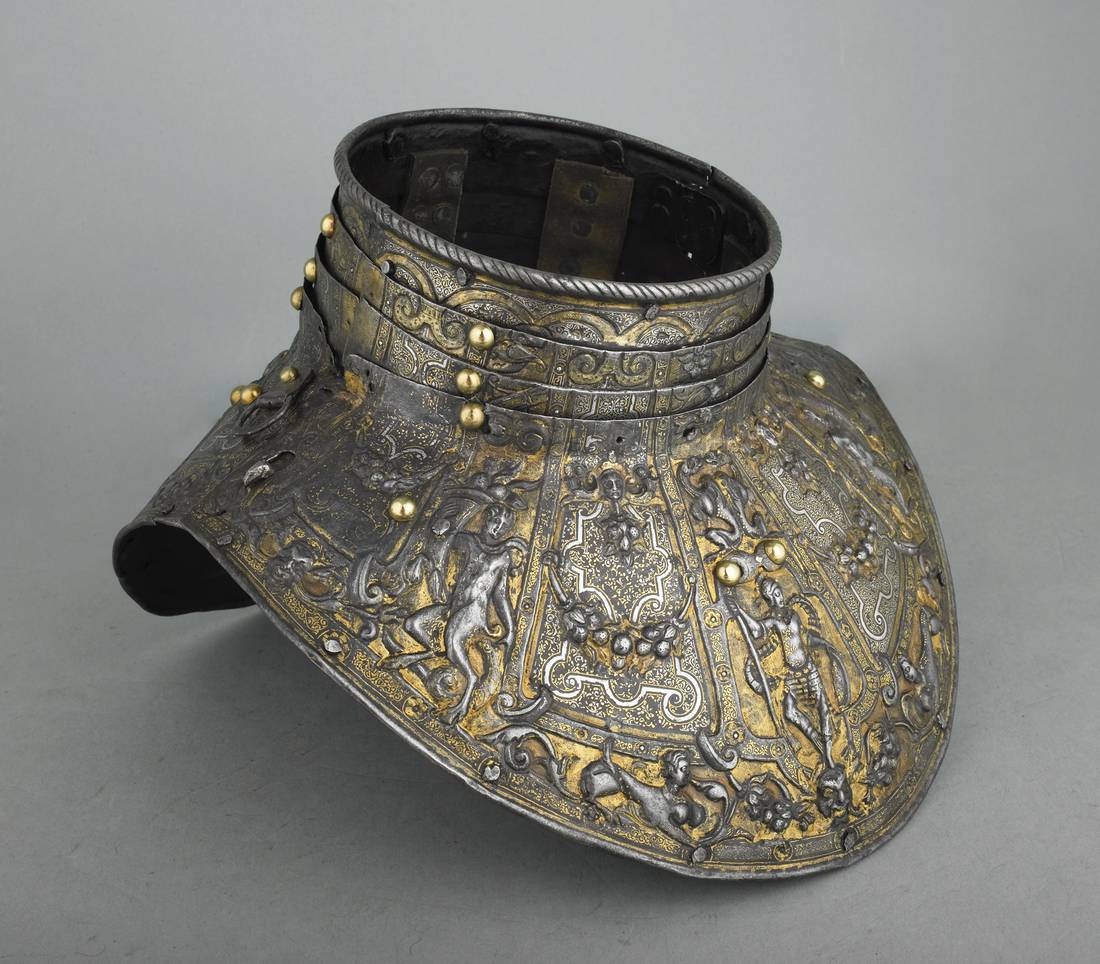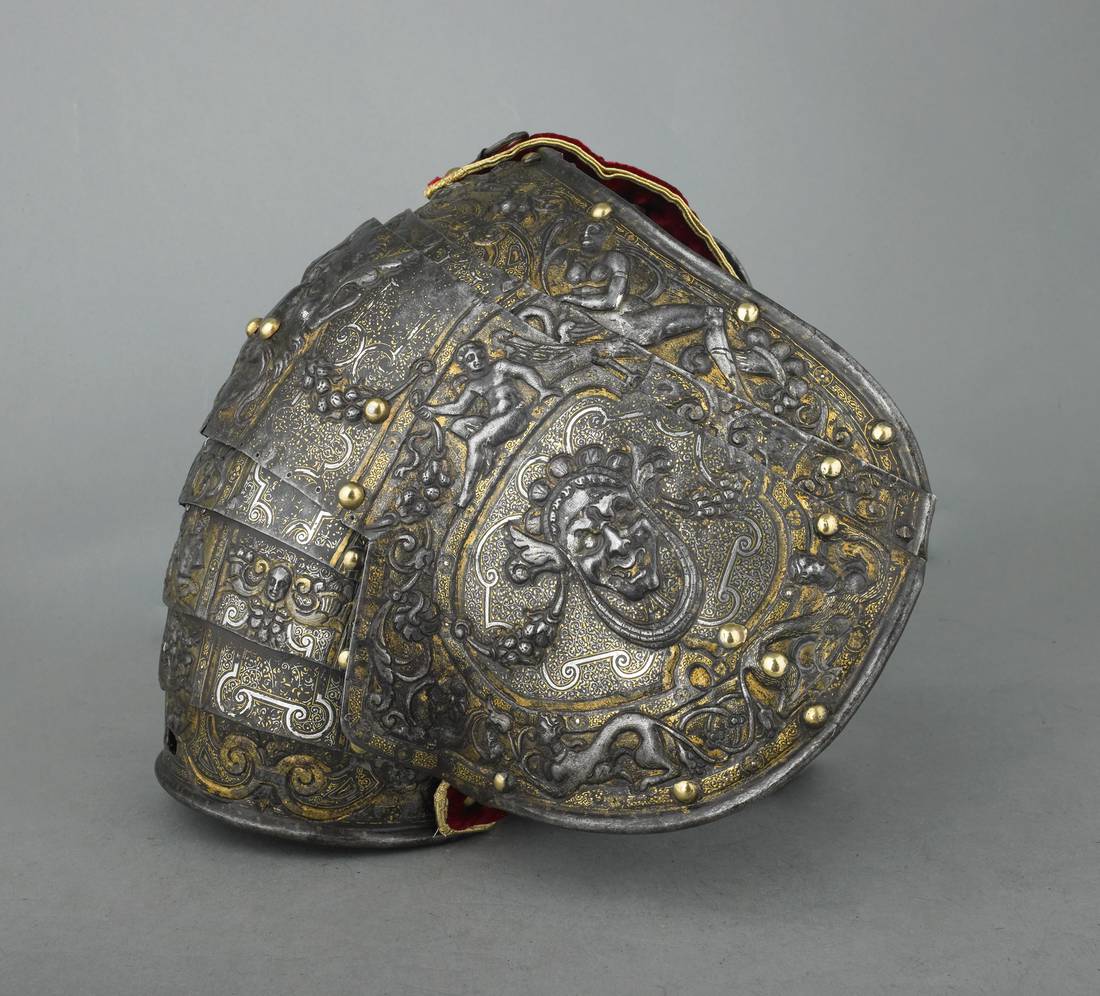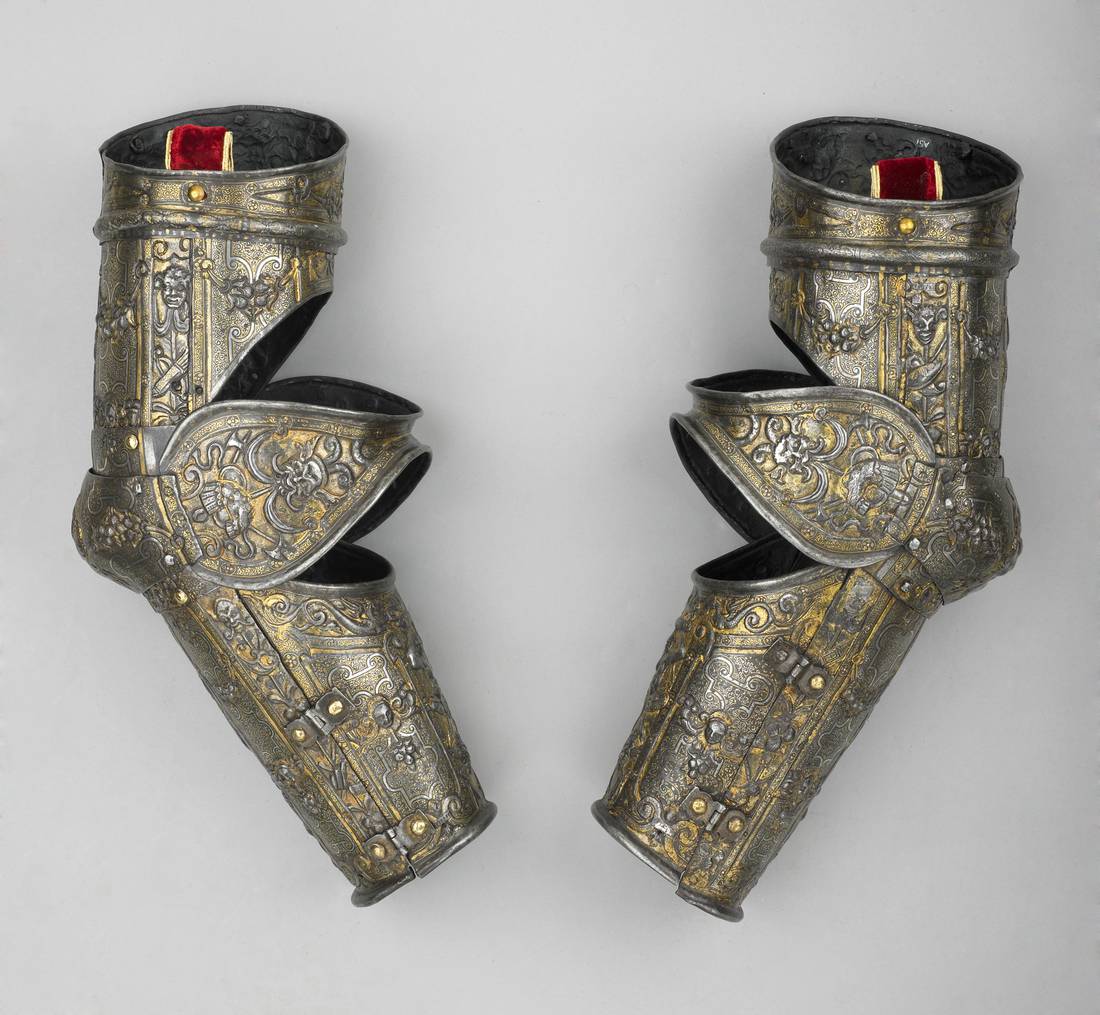The Art of Renaissance Armour: Materials and Techniques
The Wallace Collection is famous all over the world for its breath-taking European Armouries. It might come as a surprise to some that nearly half of the total contents of the museum are weapons and armour. Are not such objects more in keeping with a collection of military history or technology?
In fact, the Wallace Collection is not unique in its presentation of weapons as art. Many of the world’s greatest art museums include arms and armour alongside painting, sculpture and the decorative arts. A gallery of armour in an art museum might indeed seem a little odd at first. These are functional tools, equipment for fighting, whose practicality often makes us think of many things, but great art is usually not one of them.
Nevertheless, armour is art. Much of it is highly decorated, certainly, but it is also deeply, powerfully expressive. In fact, the armourers who made it often self-identified as artists first and engineers second. They were an essential part of the artistic communities that surrounded them, in great Renaissance cities like Milan, Florence, Nuremberg, Bruges, Brussels, Paris and London.
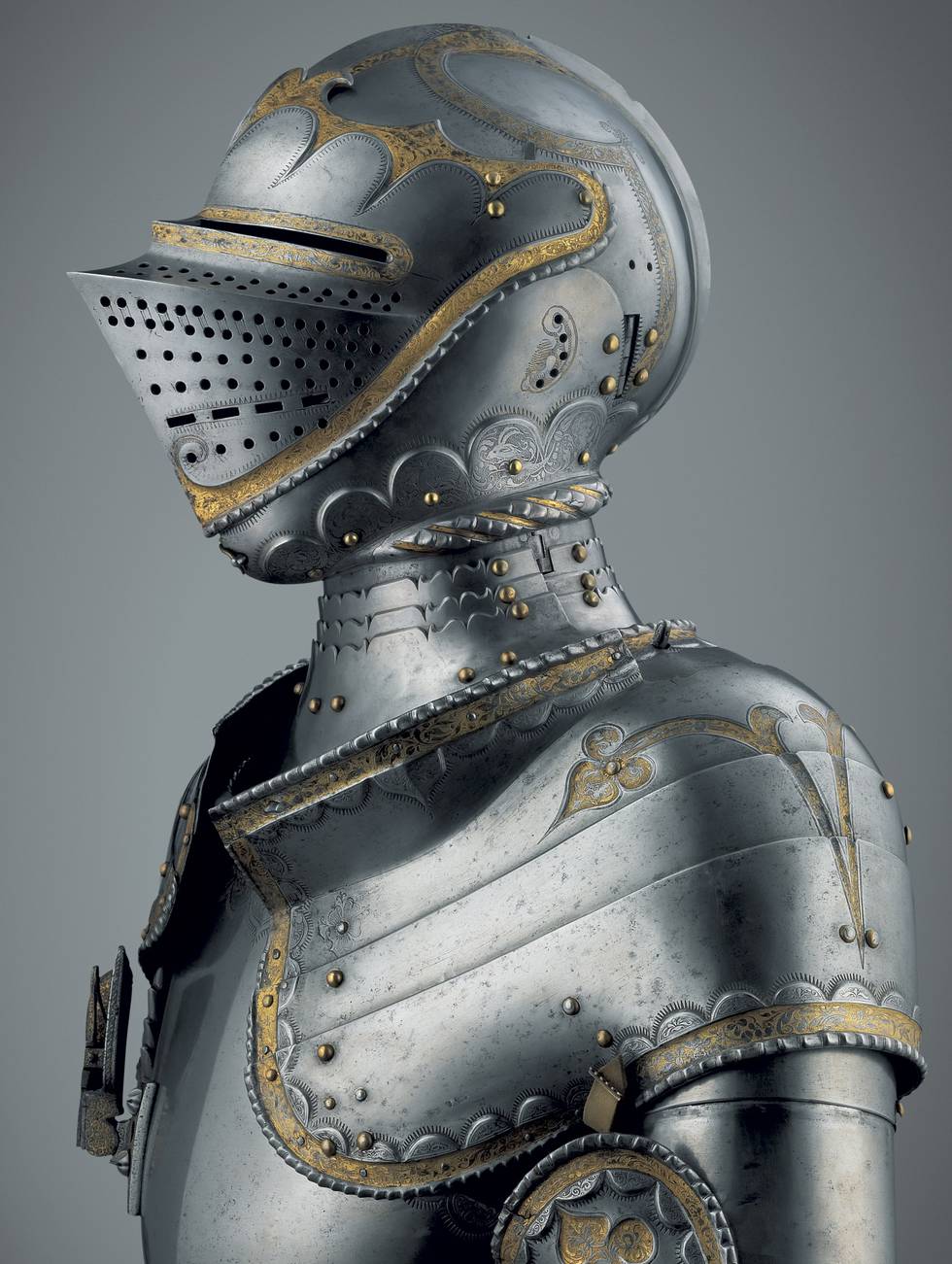
Many famous painters and designers, including Uccello, Botticelli, Dürer, Burgkmair and Holbein, studied the work of armourers and even collaborated with them, designing decoration for rich armours and even helping to devise entirely new and highly original styles.
Armour was a profoundly personal art-form for the Renaissance knights and noblemen who wore it. It not only protected them in combat, it also identified them, setting them apart from other men and broadcasting all sorts of complex visual messages about the wearer and his associations.

In a way, a good armour was a process, in which the artist transformed his patron into a living work of art, a sculpture in steel that breathed, and moved, and made a forceful impact on the world around it.
As expressive and decorative art, armour could work in a number of different ways, employing every technique and material available to the Renaissance metalworker. First, before any kind of ornamentation was introduced, there was the pure sculptural form.

Armour as sculpture was, as many other art forms, defined and led by the human form, by the body of the wearer, which it enclosed and protected. However, it was not entirely constrained by anatomy. Sculpted steel plates could hold complex forms that went far beyond, augmenting the body, exaggerating certain aspects and minimising others, to create a sense of power – a feeling that this creature of glittering metal was something more than human – invulnerable, irresistible, god-like.
The basic form of an armour could give the wearer an enhanced muscularity – wider shoulders and a narrower waist, but it could also bestow qualities that were decidedly alien, again to impart a feeling that this being of iron and steel was possessed of special powers and abilities unavailable to ordinary human beings.
Beyond form, the human body also represents a considerable surface area, a blank ‘canvas’ crying out for magnificent and ingenious decoration. By c. 1500, an extraordinary number of different metalworking techniques had been developed, and all were brought to bear on armour. Some were very ancient, dating back to Classical Times, or even further. Others were utterly contemporary.
Closer details
Please drag left or right to browse the gallery and click on an object to expand it.
Some types of armour ornament were hammered into the plates themselves, blending metal-sculpting and surface decoration. Embossing and chasing had been mastered by the Ancient Greeks by c. 500 BC, if not earlier – used to great effect on their iconic, muscled armours. Such forms, first rendered in copper and bronze, were mastered in hardened steel in Renaissance Italy. Embossing was the hammering out of a decorative form from the back of the work in progress, while chasing was the refining of that form, using fine punches and chisels, from the front.
The best such work, often called repoussé today, yielded extraordinary forms standing up in high relief. Using this technique, a helmet could be transformed into a grinning mask, the head of a dolphin or forest spirit, or the frightening visage of a beast or monster.

The essential forms of an armour, and any sculpted ornament, could then be amplified through surface decoration. The process of acid-etching was totally new in the early sixteenth century. For the first time, it allowed hard carbon steel to be festooned with what, at first glance, looks like engraving, a technique we often associate with decorative metalwork.
However, the mechanical engraving of hardened and tempered medium-carbon steel armour, though not impossible, was profoundly difficult and time-consuming. For most of the Middle Ages, this meant that engraving was generally executed on strips of softer copper alloy or silver, which were then riveted onto the steel plates to form decorative borders. The invention of etching with corrosive chemicals in c. 1485 (apparently in Flanders) meant that, for the first time, dense, expansive schemes could proliferate across all the surfaces of an armour.

The basic etching technique involved coating the metal surface to be decorated in an acid-resistant coating, called the resist, usually a wax- or bitumen-based substance. The intended decoration was then scratched out of the resist with a needle-like tool. When the acid or etchant was then applied, it selectively ate away the surface of the exposed metal, thus ‘biting’ the etcher’s design permanently into the plate.
An even cleverer etching technique was developed in the early sixteenth century, probably in the south German city of Augsburg, home to great painters, sculptors, goldsmiths, and master armourers. In raised etching, the design was painted on with the resist, so that the background was removed, leaving the main design proud.

To create even richer visual effects, embossed, chased and/or etched decoration could then be covered in precious metal through the process of mercury- or fire-gilding and -silvering. After the iron or steel had been given a thin coating of copper, a mixture or amalgam of gold (or silver) and mercury was applied to the surface of the work, which was then heated up, causing the mercury to boil or fume away, leaving the gold (or silver) chemically bonded to the metal.
The greatest works of armour-art in the Wallace Collection all employ these techniques, in a range of different combinations. On many, the pure sculptural forms of the armour are accentuated with etched and gilt strapwork, which also recalls the embroidery on fashionable clothes of the time. On others, the embossed face of a mythical beast sprouts fire-gilded whiskers, or silvered scales.

Perhaps the most elaborate armour in the Collection, and indeed one of the most luxurious ever created anywhere in Renaissance Europe, was made in Milan towards the end of the sixteenth century. Forged in the Mannerist style, this great masterpiece is almost certainly the work of the virtuoso goldsmith-armourer Lucio Marliani, called Piccinino.
A closer look
Please drag left or right to browse the gallery and click on an object to expand it.
It employs essentially every decorative technique possible- all of those already discussed, as well as inlay and overlay in silver and gold. Interestingly, this armour appears to have been made for Alfonso II D’Este, Duke of Ferrara (1533-97) who, almost uniquely in Renaissance history, was an entirely peaceful ruler who never made war on anyone. He was however a great patron of the arts, sciences and literature.
This armour therefore is entirely appropriate; its luxurious forms have been rendered in very thin, soft iron, which provide almost no protection against attack. Transcending practical function, it is therefore a proof of just how important armour was a Renaissance art-form, to those who lived through that extraordinary time.
- Dr Tobias Capwell, Curator of Arms and Armour



